The Changing Demands on Power Distribution Systems
As the commercial property sector continues to adjust to new working cultures and practices, Paul Allen, head of power distribution at CMD, explains the need for architects to ensure flexibility when it comes to the specification of power distribution systems.
[Find CMD on the BCFA Product Finder]

Workplaces continually evolve but the impact of the coronavirus pandemic and rapid technological innovation are accelerating the process. The question is how can architects provide power distribution technology for smart buildings, as innovative technologies continue to drive change?
Out with the old…
As most engineers will have found, there is high demand for technology that can assist with reconfiguration and upgrade projects, as more and more occupiers adopt hot desking and hybrid home/office working models. As a result, there has also been a significant trend for flexible power distribution layouts to be installed in coworking environments and serviced offices.
The key to futureproofing the building services upgrade is to combine an understanding of the current needs of the occupier with insight into evolving trends. Wi-Fi, virtual reality (VR), artificial intelligence (AI), Bluetooth and radio frequency identification system (RFID) enabled tech all present the potential for sudden and exponential change, so the focus for the power distribution network needs to remain on flexibility. It may be that occupants now need fewer electrical sockets and more USB, wireless and data driven connectivity, so a power distribution system should provide the flexibility to work with changing layouts and varying demand.
For buildings already using a powertrack or power hub power distribution system, adjusting to new working practices is easier because they are designed to enable adaptations during the lifespan of the installation. Additional tap-offs and/or a reconfiguration of the tap-off scheme allows a revised layout of floor boxes and grommets, sockets and workstations to be carried out quickly and easily.
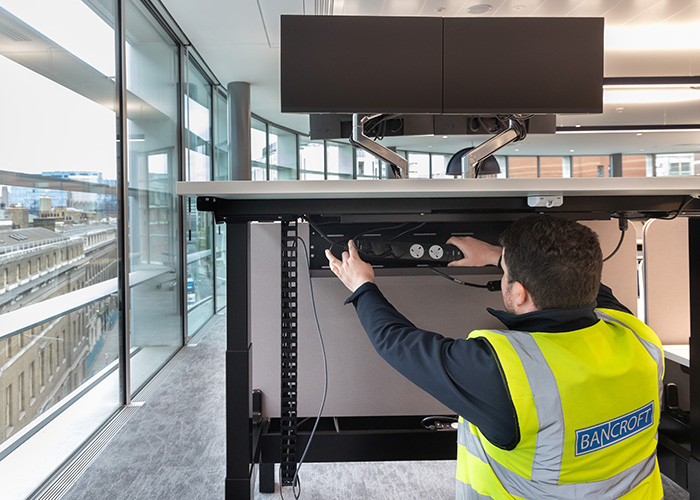
Energy saver
An essential area to consider is sustainability. Developers, landlords, owners and occupiers are increasingly accountable for the environmental performance of commercial buildings. Therefore, it’s important that a power distribution system has a long, low maintenance service life, to reduce the potential for strip-out and waste, even if an occupiers’ needs should change. Use of a high quality powertrack system, which has a proven extended service life and can be reconfigured or scaled up as required, is an ideal response to this imperative.
Automated or manual switching is another solution for more sustainable power distribution networks. Bespoke solutions can be configured that enable an ‘all off’ power down out of office hours. It is likely that this type of energy saving solution will become more commonplace as office occupiers continue to implement carbon reduction plans and are held accountable for demonstrable environmental improvements by their customers.
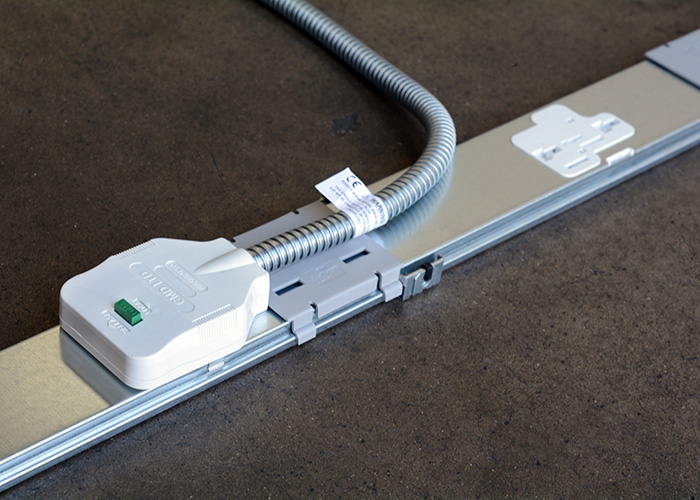
Staying the course
Environmental performance must be balanced with resilience, however. For commercial office occupiers in sectors that rely on mission critical computerised systems, such as the banking and broadcast industries, the ability to switch from the main distribution to the uninterruptible power supply (UPS) may also need to be incorporated in a power distribution system design.
This can be done using either a powertrack or power hub distribution system, with colour coded tap-offs to ensure each feed is easily identifiable. With continued volatility in the energy sector, there is potential to see an increasingly strong focus on resilience over the next few years, so dual feed installations may become more commonplace.
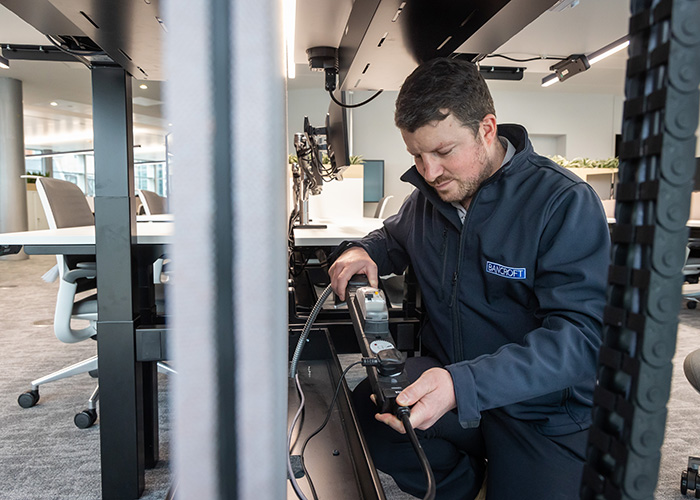
How low can you go?
A powertrack installation is usually the most appropriate option for power distribution systems in new build developments, but older buildings can be more challenging. Unlike contemporary buildings, where floor voids have usually been designed with sufficient capacity for the level of services required, heritage or older buildings often have shallow or uneven floor voids. This can mean that they are unsuitable for a powertrack system because the tap-offs are made to the top of the track and require sufficient clearance for maintenance or reconfiguration.
The traditional response to insufficient or inconsistent floor voids is to opt for a hardwired electrical network or to raise the floor to increase the void space, but this can compromise headroom. A power hub system provides a convenient alternative to a conventional powertrack and overcomes the issue of shallow or inconsistent floor voids, while offering the same ease of installation, maintenance and reconfiguration benefits.
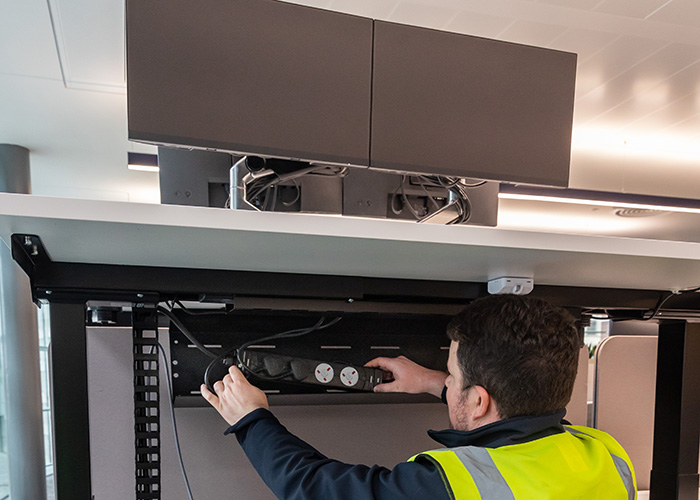
Problem solver
Power hub systems have tap-offs located to the side of each unit, rather than above, making them a much more suitable for shallow and undulating floor voids. They can be specified in 4-way and 6-way units and combine compact hub units with flexible metal conduits or ‘umbilicals’, which connect the hubs together to create the electrical distribution network.
The metal flexible conduits provide cables with mechanical protection, allowing compliance with Wiring Regulation 543.7 Earthing requirements for the installation of equipment having high protective conductor currents. They also protect cables from dirt ingress and rodents, ensuring a similar level of resilience to powertrack systems and ensuring that the electrical distribution system offers a low maintenance, fit and forget solution.
Tap-offs use BS EN 61535 compliant connectors in a metal housing to ensure a secure and safe connection. A choice of tap-off units allows electrical supply to be routed to the required locations, while minimising the number of hub units required. This keeps costs and installation times down and optimises void space. Additional hub units or tap-offs to existing units can be retrofitted to the installation at any time, with no additional space required for plugging in or unplugging tap-offs and the potential to configure multiple power hubs together on a single circuit. This provides the flexibility required for commercial environments to continue adapting to changing working cultures and technologies.
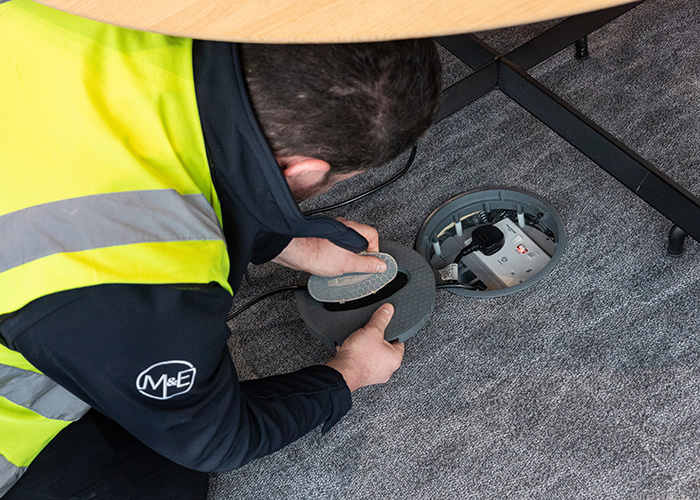
Readiness for change
Change in the workplace is nothing new – even those whose working lives can be counted in years rather than decades know that. However, the impact of the pandemic, technological innovation and the emergence of jobs that never previously existed are all accelerating change. Architects need to be ready to adapt, so building the flexibility to reconfigure existing power distribution networks without time-consuming, expensive and wasteful strip-out is vital.
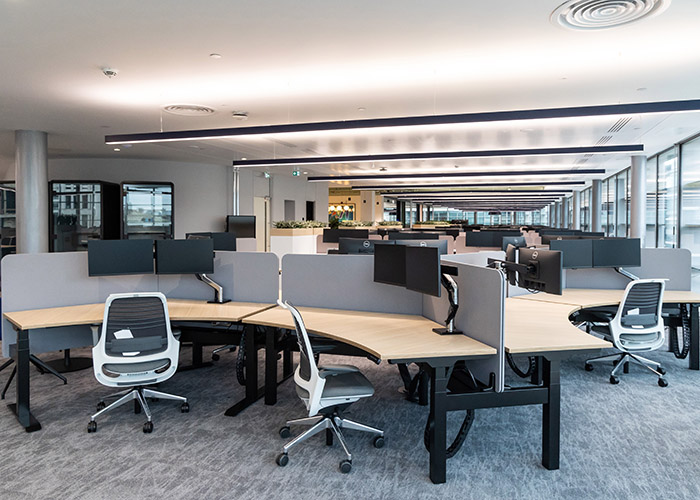
Contact CMD on the BCFA Product Finder
The BCFA Product Finder is a unique search engine created especially for interior designers to source contract furnishing companies. Utilising this platform will support your findings for upcoming projects, with over 200 members profiles showcasing the latest product launches, new materials available, industry news, and design trends.





